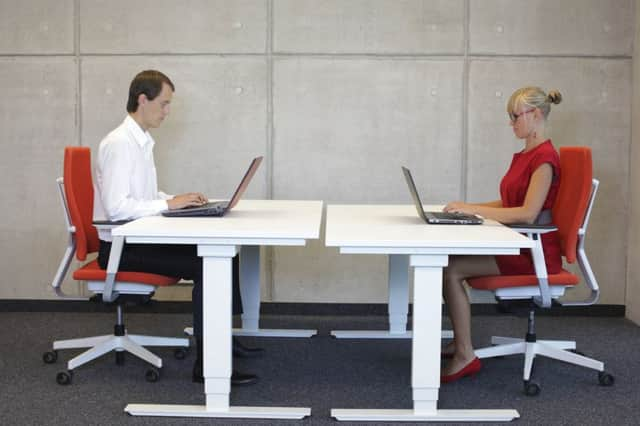Moving testament to power of living an active life


Sitting is taking over our lives and research evidence is stronger than ever that it’s just as bad as smoking for the nation’s health.
The longer we sit, the shorter our lifespan is likely to be, and the greater the risk of high blood pressure, Type 2 diabetes, or coronary heart disease. Today it is estimated that one third of adults do not achieve the recommended levels of physical activity. Long hours sitting at a desk, driving and watching television all add up. Indeed, many of us will spend more time sitting than sleeping.
Advertisement
Hide AdAdvertisement
Hide AdThe impact of our increasingly sedentary lifestyles is huge. One million deaths (about 10 per cent of the total) in the European region are attributable to physical inactivity. This not only has consequences for healthcare costs but also for productivity due to increased periods of sick leave, work disabilities and premature deaths. Conservative estimates are that more than 2,500 Scots a year die due to inactivity, and leading researchers reported that the burden of ill-health due to physical inactivity cost the NHS in Scotland more than £90 million in 2010-2011.
This has led to a call from medical professions of the Academy of Medical Royal Colleges and Faculties in Scotland to treat physical inactivity as seriously as smoking. Employers have an increasingly important role to play in public health and many have already voluntarily promised support for the UK Department of Health’s public health “responsibility deal”.
However, there is more that can be done. A review of the national physical activity strategy showed that women, girls, older adults and people with lower socioeconomic status are hardest to reach, and there remains a need for sustained commitment to promoting and enabling increased physical activity beyond health and social care providers.
Universities training health professionals in Scotland are already embedding physical activity into the curriculum. All places of education should promote the benefits and routes to moving more.
Sitting is built into the fabric of our lives and now it is taking over. We are conditioned to sit from an early age in school. The economic climate and career demands for parents means that children and adolescents spend more time in school or day-care settings than ever before. School playing fields are disappearing and academic priorities give less time to physical education and active play.
Greater distances between friends and family, home, work and play has increased use of cars and reduced opportunities for walking and cycling. New housing developments and neighbourhoods are not designed for active transport. Road safety can be a major concern.
Increasing access to sedentary entertainment, social media, which reduces the need to leave the comfort of our sofas to connect with friends, and technical aids such as escalators means we have simply stopped moving. In the face of all these environmental and systemic barriers, getting a healthy amount of physical activity everyday is becoming more and more difficult.
Eating lunch at our desks, e-mailing colleagues in the next office 20 steps away, shopping on the internet and using self-driving vacuum cleaners all contribute to reducing how much we move around each day. Making small changes in our daily pattern can significantly reduce the amount of time spent sitting.
Advertisement
Hide AdAdvertisement
Hide AdSo how much physical activity do we need? The guidelines recommend 150 minutes a week for adults and one hour a day for children. The really difficult part of all this is that most of us know what is needed for a healthy life, that we should eat a balanced diet, get more exercise and sleep but it seems so hard to fit it all in. And that’s where employers have a role to play by actively encouraging and embedding physical activity into the workplace. Walking meetings, variable height desks, gym balls in the office could easily become the norm.
Staff rooms with space to play as well as rest, issuing pedometers, subsidising and actively encouraging social groups for sports teams, fitness classes, meditation or even music groups, introducing regular short breaks throughout the day are initiatives more likely to increase productivity than reduce it.
Above all employers across Scotland, and across all sectors, need to champion a workplace culture where moving is the norm. From cradle to grave, physical activity is the polypill for health and wellbeing. The most effective medicine is the activity you find pleasant and enjoy, and can do together with others. Step outside. Run, Cycle. Play a game. Garden. Dance.
Whatever you choose, just move.
• Jane Culpan is programme leader for BSc (Hons) physical activity health and wellbeing at Queen Margaret University, Edinburgh